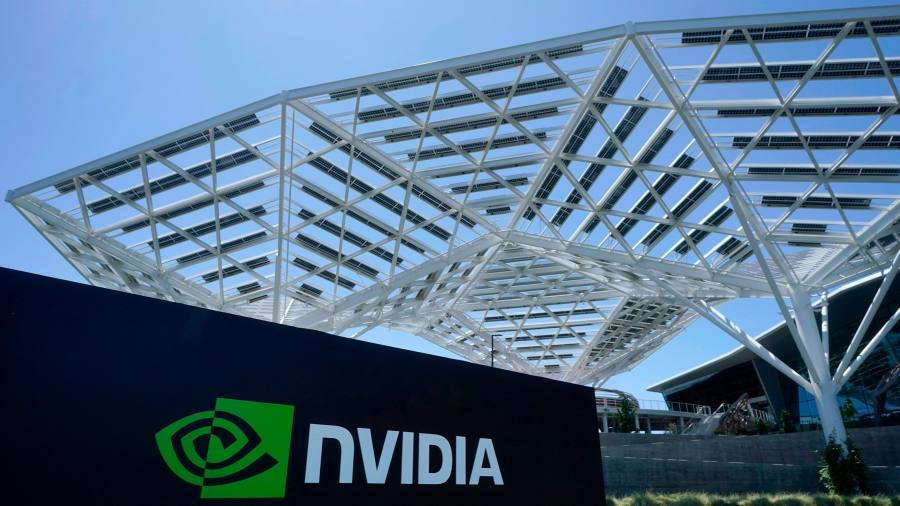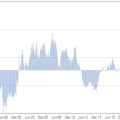Hello and welcome to the latest edition of the FT’s Cryptofinance newsletter. This week, we’re taking a look at the troubled bitcoin mining industry.
The repeated blowout earnings from Nvidia have delighted the chipmaker’s investors and Wall Street analysts and no doubt the company management, if only because they do not need to talk about the irritating issue of crypto.
The worlds of digital assets and global chipmaking intersect in cryptocurrency mining, which plays a crucial role in the operation of tokens such as bitcoin.
For bitcoin and other tokens to work, miners are needed to verify new blocks of payments on blockchains. They effectively take on the role as the market guarantor that ensures deals are trustworthy in a system that bypasses third parties such as banks and exchanges. In return, miners are rewarded financially with new coins.
Their computers run continuously and require specialised graphics processing units (GPUs), computer chips that can handle high volumes of calculations. It turned out that Nvidia’s chips were the best product suited to the task and so demand from crypto-hungry miners soared from 2017.
However, these customers were something of an inconvenience for Nvidia, although it wasn’t the only chipmaker to have this problem.
Last year Nvidia settled charges from the Securities and Exchange Commission, with a $5.5mn penalty, that the company had failed to adequately disclose to investors the impact of crypto mining on its gaming business in the financial year to 2018.
And by May 2021 it was tweaking the output of some graphics cards to make sure they fell into the hands of gamers, rather than crypto bros jumping on the latest trend.
“Nvidia had designed its high GPUs for AI training and its low-end ones for gamers, both of which were more stable and reliable long-term markets than crypto,” Chris Meserole, director of the Artificial Intelligence and Emerging Technology Initiative at the Brookings Institution, the US think-tank, told me.
“So when the price of ethereum spiked, the demand for [Nvidia’s] chips crowded out many of the long-term customers it was trying to service. Not that they hated the short-term profits, but strategically it created a few headaches,” Meserole added.
But the clamour for AI chips has shifted the company’s relationship with crypto dramatically. With Nvidia’s success snowballing, in March the company felt comfortable enough to say what it really felt.
“I never believed that [crypto] is something that will do something good for humanity,” Michael Kagan, Nvidia’s chief technology officer, told the Guardian.
“All this crypto stuff, it needed parallel processing, and [Nvidia] is the best, so people just programmed it to use for this purpose. They bought a lot of stuff, and then eventually it collapsed, because it doesn’t bring anything useful for society. AI does.”
But while one half of the odd-couple relationship has clearly moved on, the other is still clinging to the bond they once shared. As the price of bitcoin soared in 2020 and 2021 companies poured money into buying more mining equipment. Much of it was financed by debt. Back then, interest rates were low and money and energy was cheap.
But the crash in the price of bitcoin lowered overall profitability, as did rising energy costs. And if you bought a bunch of graphics cards to mine ether two years ago, the blockchain’s move to a greener system in 2022 left you in the dust.
Looking around for a credible story to tell, crypto miners talked of hitching themselves to the cloud computing trend. With demand for energy across economies becoming increasingly acute, some — perversely — got paid by authorities NOT to mine bitcoin, and that proved more profitable than actually mining it.
But now AI is potentially offering a helicopter out of Saigon. Nvidia is still running hard to keep up with demand.
“The companies that have shifted their priorities are not chip designers like Nvidia, but instead crypto mining companies that had purchased a bunch of chips for mining ethereum and now have pivoted to servicing the AI market instead,” Meserole said.
A rebrand is well and truly under way, too. Mining companies such as HIVE Blockchain Technologies and Riot Blockchain have changed their names to ditch their blockchain baggage, becoming HIVE Digital Technologies and Riot Platforms respectively.
Companies such as Canada’s Hive are sat on 38,000 GPU-based cards so it would not be a surprise to see a couple bought up, especially as their stock prices are depressed. Still, repurposing GPUs adapted for crypto mining is not straightforward.
But removing excess capacity from the market is likely to have knock-on effects for bitcoin. Mining bitcoin has become progressively harder as the cost of mining the industry’s flagship token has increased all year because the bitcoin hash rate, or the amount of computing power needed for the network to process transactions increases.
This risks pushing the business of mining bitcoin and other tokens even further into the hands of a rich few who can buy GPUs in bulk. Competition for the latest tools is likely to be tougher, especially if the seller doesn’t really believe what you’re doing has much value.
What are your thoughts on Nvidia’s results and the lagging crypto mining market? As always, email me at scott.chipolina@ft.com.
Weekly highlights:
-
Collapsed crypto exchange FTX has plans to appoint Galaxy Digital, the investment giant led by US billionaire Mike Novogratz, to help manage and sell the company’s digital tokens in an effort to make creditors whole. The investment group was selected because of its “extensive experience in areas relevant to digital asset management and trading”. A reminder: Galaxy disclosed a near-$77mn exposure to FTX two days before the Bahamas-based exchange filed for bankruptcy in New York.
-
For the 7,436th time, central bankers have warned against the risks associated with crypto assets: the Consultative Group of Directors of Financial Stability, which includes central bank representatives from countries including the US, Argentina and Brazil, said crypto had amplified rather than reduced financial risks in less developed countries. My colleague Laura Noonan has the story here.
Soundbite of the week: A chilling reminder for crypto’s privacy advocates
Remember Tornado Cash, the crypto mixing service that allegedly laundered more than $7bn in three years and helped North Korean hackers evade sanctions?
This week, US federal prosecutors charged two in connection with operating the service: Roman Storm and Roman Semenov. As I noted last year, when the grand decentralised crypto worldview meets the US sanctions regime, the US sanctions regime wins.
Speaking on the charges, US attorney Damian Williams said:
“While publicly claiming to offer a technically sophisticated privacy service, Storm and Semenov in fact knew that they were helping hackers and fraudsters conceal the fruits of their crimes. Today’s indictment is a reminder that money laundering through cryptocurrency transactions violates the law, and those who engage in such laundering will face prosecution.”
Data mining: More AI enthusiasm creeps into crypto
Label anything “AI” and it will generate interest, it seems. In the world of alternative crypto tokens that are not bitcoin or ether, coins that are linked with AI projects are the only basket of cryptocurrencies delivering positive returns so far this month.
Other baskets, including exchange tokens and decentralised finance tokens, are trending firmly in the wrong direction. This, of course, is not very surprising considering the total value locked in decentralised finance projects has dipped below $40bn, a far cry from its almost $180bn height in late 2021.

FT Cryptofinance is edited by Philip Stafford. Please send any thoughts and feedback to cryptofinance@ft.com.


